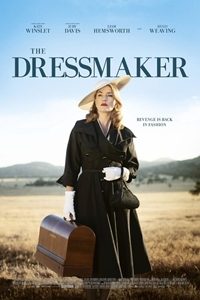A strong foundation supports the bizarre trip of ‘Doctor Strange’
Directed by Scott Derrickson
Starring: Benedict Cumberbatch, Tilda Swinton, Mads Mikkelsen, Chiwetel Ejiofor, Benedict Wong, and Rachel McAdams
“Doctor Strange” – “I don’t understand what is happening.”
While on her hospital shift, Dr. Christine Palmer (Rachel McAdams) exclaims these words during an obvious point of confusion. She cannot explain the magic that her former colleague and love interest, Dr. Stephen Strange (Benedict Cumberbatch), conjures up in front of her.
Magic?
For instance, while Strange lies wounded on an operating table, his astro form leaves his body and floats above it. In other scene, he opens a storage room door and shows Christine a circular portal – created by a sling ring that harnesses the energy from the multiverse. In another moment, she blankly stares at a floating red cape – called the Cloak of Levitation – that seems to possess a mind of its own.
An astro form, a sling ring and a Cloak of Levitation?
For those of us not familiar with the comic book sorcerer named in this film’s title, this latest Marvel movie certainly can be confusing. On the other hand, director Scott Derrickson thankfully spoon-feeds the head scratching cosmic map of Strange’s journey to the audience. Derrickson keeps a general audience conversant with the basics, so we can stand on some solid ground before he takes the story into wild - and sometimes disturbing - vicinities of science fiction. For example, he plays with similar matter-altering concepts in “Inception” (2010), stands them on their head and then folds them into paper airplanes.
The special effects are spectacular. In addition, “Doctor Strange” also comfortably drives within the guardrails of Marvel’s successful recipe by showcasing consummate actors playing well-written characters as a necessary cinematic foundation. Since this particular film bathes in the supernatural, it becomes vitally important that the audience feels grounded and buys into the lead characters.
Before the movie catapults us into a series of universes (yes, universes), it introduces us to Strange and his life on this one. Cumberbatch is perfectly cast, and he plays the off-the-charts, brilliant neurosurgeon with a James Bond-like confidence. Although Strange’s wit is sometimes reminiscent of 007, it is more ruthless, more sarcastic and more wrapped in narcissism. In a few choice early scenes, Derrickson effectively captures and establishes Strange’s egotism.
One day, however, Strange’s nerves of steel in the operating room become literally severed, and in a fevered race to find a cure for his traumatic ills, he figuratively pushes everyone away. Strange’s arrogance gifts birth to a new sibling called spite, and these emotional brothers are toxic. To become physically whole again, he finds his way to Nepal for help and steps into a locale that looks like Ra’s Al Ghul’s lair with a noticeably lighter atmosphere. There, he meets three spiritual teachers: The Ancient One (Tilda Swinton), Mordo (Chiwetel Ejiofor) and Wong (Benedict Wong), and they offer lessons of magic and martial arts.
Although Strange’s race to solve his terrible physical problems is a most serious one, not unlike other Marvel pictures, the film takes intentionally funny turns. Strange pokes (and pokes fun) at the rules that The Ancient One created, and most of the boundaries are pushed at Wong’s expense to very humorous effects, including one borrowed classic moment from “Guardians of the Galaxy” (2014). While Strange completes important assignments like creating orange, sparkly lassos of energy, opening portals with his sling ring and entering a mirror dimension, his wit moves from narcissistic to playful. Hence, as Strange becomes more entertaining, his superhero turn is even more welcomed.
Derrickson – previously known for horror films like “The Exorcism of Emily Rose” (2005) and “Sinister” (2012) – takes a welcome chance at this bizarre-looking superhero film. True to horror movie form, Mads Mikkelsen (“Casino Royale” (2006)) plays a scary villain, Kaecilius, who carries blackened circles under his eyes so dark, you’d swear that he hasn’t slept a wink in the 21st century.
Like most origin superhero films, Strange has to overcome obstacles within himself before he can duel with a skillful antagonist. While “Doctor Strange” offers a visually dazzling and unusual voyage into flexible physics and beliefs, at the movie’s core, Cumberbatch and the cast deliver a gratifying story about a most unique doctor. From that perspective, we do know what is happening.
(3.5/4 stars)
Jeff – a member of the Phoenix Critics Circle – has penned film reviews since 2008 and graduated from ASU’s Walter Cronkite School of Journalism. Follow Jeff and the Phoenix Film Festival on Twitter @MitchFilmCritic and @PhoenixFilmFest, respectively.


















 The Magnificent Seven
The Magnificent Seven
 ‘The Dressmaker’ needs some alterations
‘The Dressmaker’ needs some alterations
 ‘Storks’ delivers a fun animated experience
‘Storks’ delivers a fun animated experience








